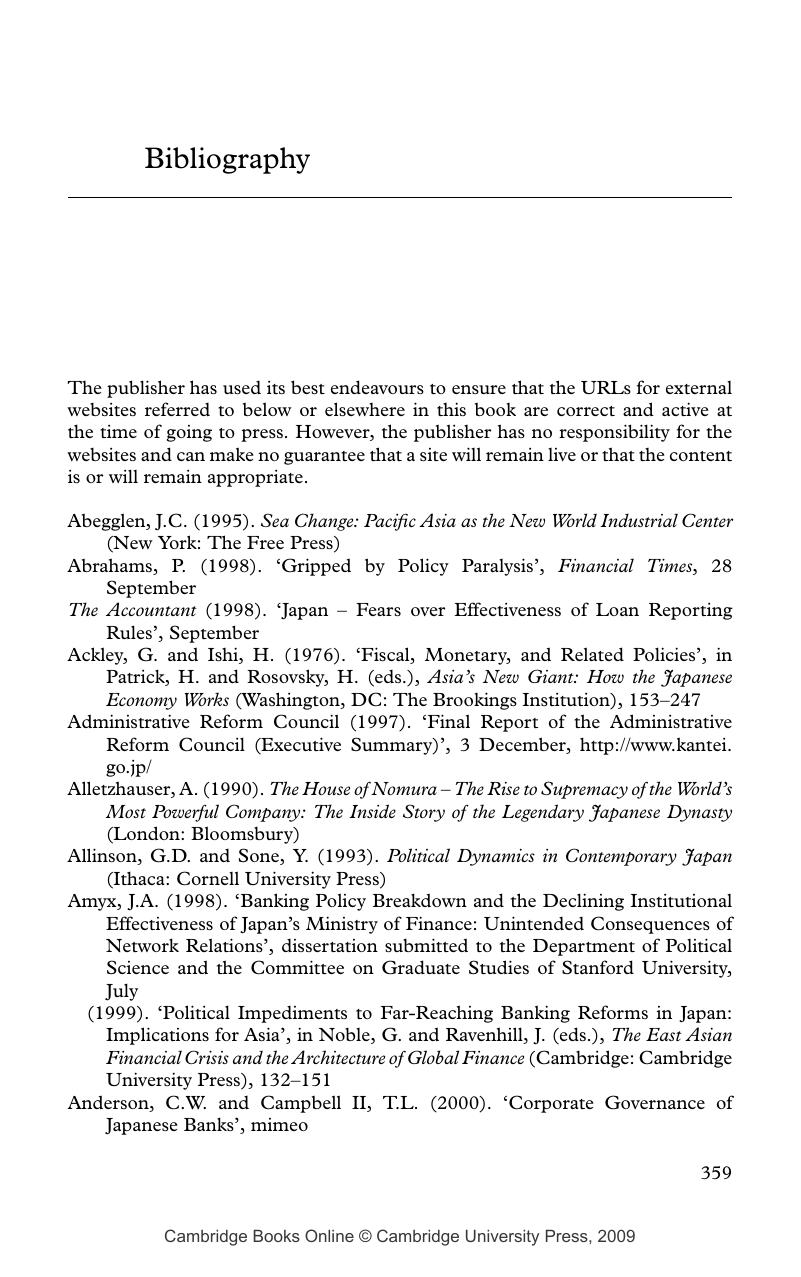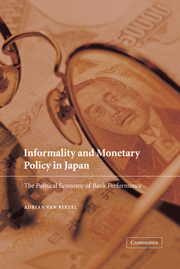Bibliography
Published online by Cambridge University Press: 22 September 2009
Summary

- Type
- Chapter
- Information
- Informality and Monetary Policy in JapanThe Political Economy of Bank Performance, pp. 359 - 391Publisher: Cambridge University PressPrint publication year: 2002



